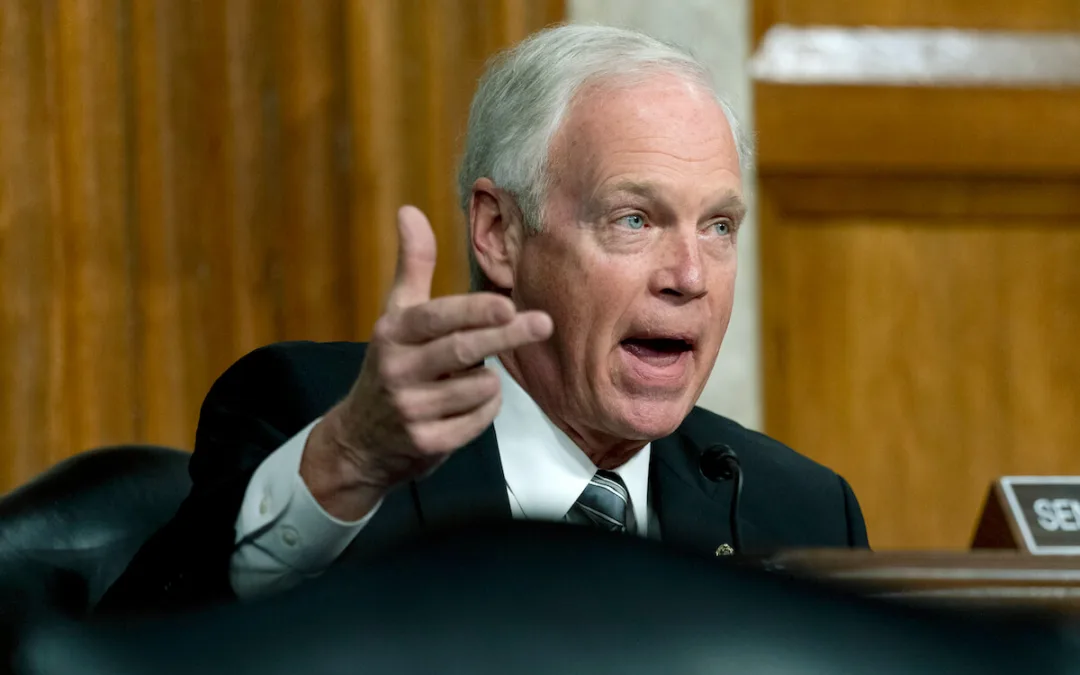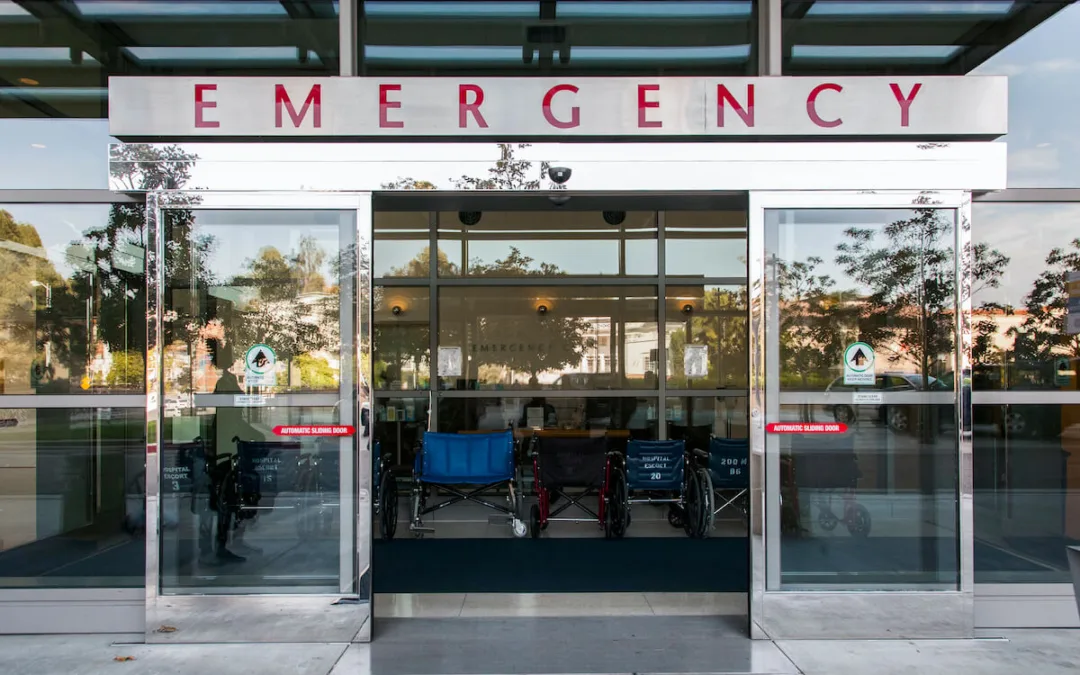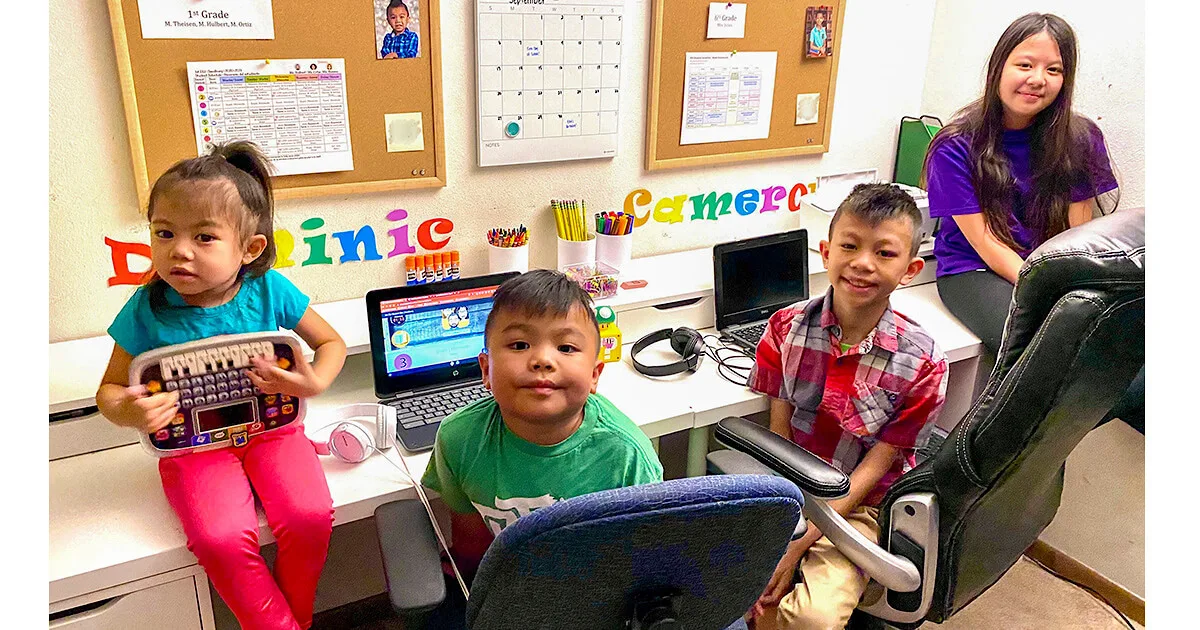
#image_title
#image_title
The ongoing spread of the coronavirus is putting school officials, parents, and students in unique situations. Everyone is struggling to adapt.
The coronavirus pandemic is changing every aspect of life. For the parents of school-aged children, the pandemic is presenting new challenges, decisions, and points of stress.
Some parents were given the option to choose between virtual or in-class learning at the start of the school year. Others in larger districts were not, while many smaller districts returned to full-time, in-person instruction. Still others watched as their college-aged kiddos packed up and headed back to campus, everyone hoping for the best.
Then there’s the group of students who remain unaccounted for. They lack the resources, support, or housing stability to make it to school or log-in for virtual classes, circumstances the pandemic only exacerbates.
UpNorthNews first spoke with seven families with school-aged children in mid-September. At that time, K-12 schools had been open for roughly three weeks in some parts of the state and college campuses were beginning to see a surge in coronavirus cases that would result in the quarantining of students at UW-Madison, UW-La Crosse, and UW-River Falls.
Recently, UpNorthNews reconnected with the same families. Here’s what they told us.

“It falls on me. I feel the pressure.”
Cee and Peov Khuy of Madison are the parents of four children: Mikayla, 13; Cameron, 11; Dominic, 6; and Ellie, 4.
Peov works third shift and Cee is a cardiology coordinator with UW Health, allowing her to work at least part of the week at home. She also works at least 24 hours each month at SSMHealth Hospital in Madison, usually overnight shifts on weekends.
“Even if Madison had not gone virtual, I would have kept my kids home,” Cee said. “I did not feel comfortable having them go to school.”
Cee’s days now include juggling the virtual learning of an eighth-, seventh-, and first-grader while fielding questions on calls with heart patients. This allows her husband to get some sleep when he returns home from work around 7 a.m.
The first-grader must log on to Zoom at 8:30 a.m. every morning or else be counted absent. The two middle schoolers do so at 9 a.m.
“It is not easy,” Cee said. “Last year, it was mostly review work. Now, they are learning new things.”
She said the schools do a great job sending schedules, letting students know when they need to log in for which classes. The two oldest don’t need much assistance, but she still needs to make sure her first grader is logging in on time and getting his work done.
“I felt it was going to fall on me, and I didn’t know how I was going to do it,” Cee said. “My husband tries to help when he can, but it all falls on me. I definitely feel the pressure.”
Cee has set up spaces within their home for the kids to study and has set alarms on their iPads alerting her children to different times in the day when they need to log-in for specific classes.
When Cee originally spoke with UpNorthNews, students in Madison were scheduled to go back to school at the end of October. On Thursday, the district announced that would no longer be happening because of the surge in cases in Dane County. Now, students will remain home until at least the end of January.
Cee said her kids are “desperately missing their friends.” She has been keeping them isolated. Even when they are invited to outings or sleepovers with friends, she is not yet letting them go. She says as a family they are getting outside as much as possible, hiking and going to parks. They always wear masks.
“I have been fortunate our kids are not complaining about it,” Cee said. “When my daughter asks if she can go for a sleepover, I tell her, “No. The numbers haven’t gone down yet.’”
Cee said when the time comes for her children to return to school she will still view it as a trial period.
“Something about being in the school environment and having the social interactions with teachers and other students is very important. If we can get to the point and it can happen safely, that is what I would like for my kids.”
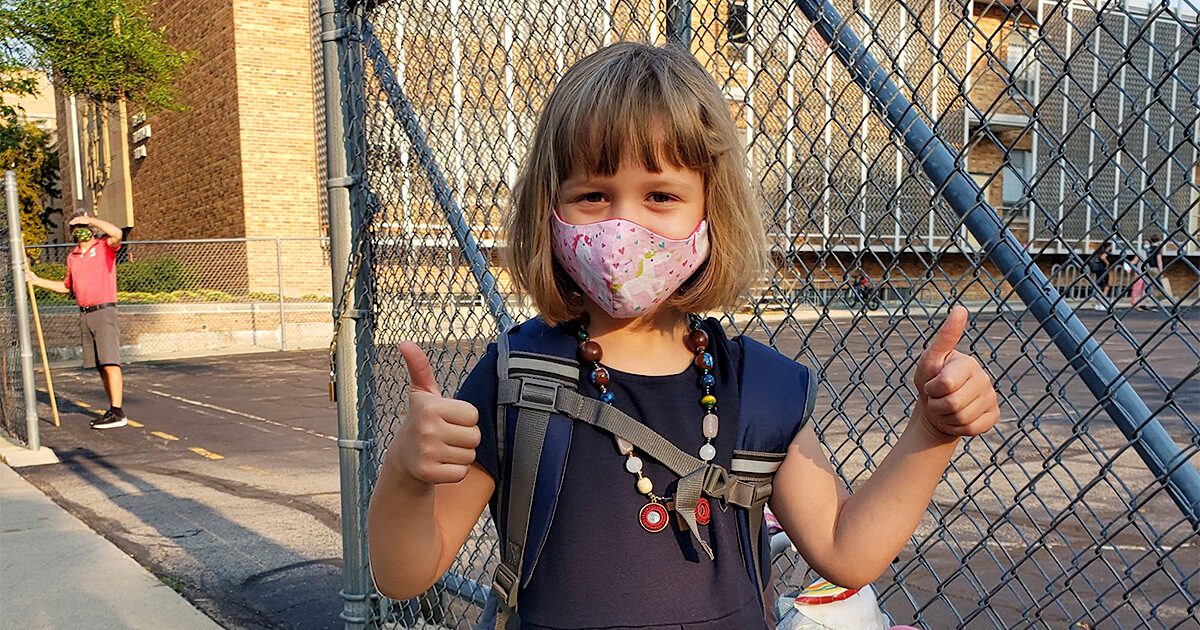
“Nothing is normal. I don’t think anyone is under the illusion that life is normal.”
Sophia O’Connor’s first day back at Blessed Sacrament since March was Aug. 26. Like many other parents that day, Kara and Ryan O’Connor commemorated the start of her kindergarten year by snapping her picture. Standing in front of her bicycle wearing her all-blue Catholic-school uniform and unicorn-themed face mask, Sophia posed with two thumbs up.
Sophia had attended the downtown Madison school for pre-kindergarten. It was a familiar environment and her parents felt comfortable with the coronavirus precautions in place to allow her to return for in-person instruction.
Students who attend Blessed Sacrament have their temperatures checked before entering the school and wear masks at all times except when eating or drinking. Group tables were replaced with individual desks 6 feet apart, isolating kids in groups of 15 or fewer with one teacher. Sanitation occurs frequently, and shared spaces such as the lunchroom, art, and music rooms were eliminated. In addition,school families are required to self-quarantine for two weeks before returning to school if they choose to travel.
Sophia’s parents decided there was no substitute for a 5-year-old for being around other kids. Their decision came with sacrifices the family was willing to make.
The O’Connor family is declining all invitations to visit family this fall and have generally shifted to thinking of their daughter’s class as their bubble. The family is not socializing much with others and Sophia will no longer be taking swimming lessons.
“My prevailing feeling is that this is a responsibility that we need to take seriously,” Kara said. “We know it’s a risk to have kids come together in a group. I’ve been impressed with how seriously the school and the school families have taken this responsibility.”
Kara said she thinks Sophia had been lonely since her 4-K program closed in March. Kara and Ryan did their best to juggle homeschooling and their jobs but it seemed nothing they did could keep their daughter’s spirits up.
“There were times this spring when I felt like our daughter was retreating into her own imaginary world,” Kara said. “I wasn’t sure how to get her back.”
The evening after the first day of school Sophia “was practically bouncing off the walls with happiness,” Kara said.
“She talked nonstop about what they had done at school,” Kara said. “It had been so long since she had been in a kid-centered environment.”
In the school’s ongoing effort to keep students safe, Blessed Sacrament will begin the new year with the first two weeks in January with virtual rather than in-person learning. The school is assuming some families will travel and is building in the virtual weeks to allow time for families to quarantine.
So far, Kara does not know of anyone who has tested positive at the school.
“If we can keep this going, I hope our school and the others that are operating in person can provide a ‘proof of concept’ that will make other schools feel more comfortable about opening,” she said. “For the sake of the kids.”
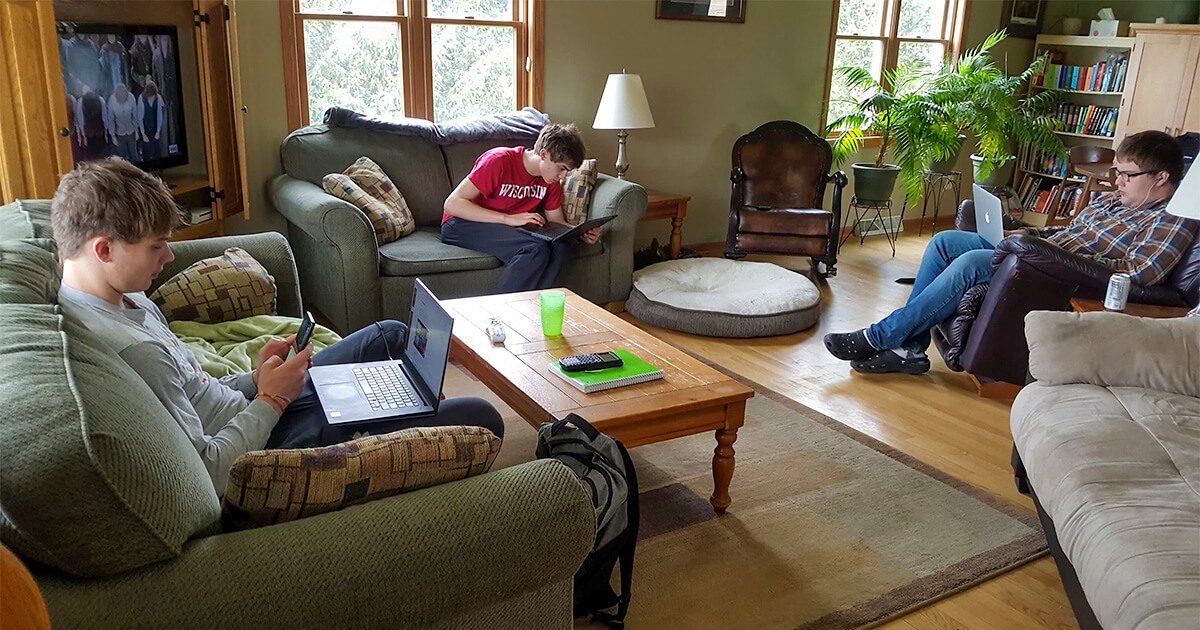
“Hopefully I have raised them to make responsible decisions.”
Katherine Pethan and her husband were close to being empty nesters. Then the coronavirus pandemic hit Wisconsin.
“Suddenly, I had three kids back home, fighting over the internet,” Katherine said. “It was horrendous.”
The Pethans live in a rural pocket of Dane County near the town of Berry. Near the border with Sauk County, the family’s youngest son, 16-year-old Tommy, attends Sauk Prairie High School. Ben, 19, is a UW-Madison sophomore and Joey, 22, attends UW-Milwaukee.
When Pethan first spoke with UpNorthNews in mid-September, coronavirus cases were skyrocketing on the UW-Madison campus and the Milwaukee area was posting daily new positive cases higher than the rest of the state.
She said there was never a discussion if Ben and Joey would return to college in the fall.
“I think what made it easier for us is we weren’t sending them back to the dorms,” she said. “We knew there was a limited amount of people they would be exposed to.”
Then, there’s their health. Pethan describes her sons as “big and strapping.” They have no underlying health conditions.
“It was their decision. They are 19 and 22,” she said. “Hopefully I have raised them to make responsible decisions.”
Ben returned to UW-Madison to live in an apartment near Camp Randall Stadium. An engineering student, Ben was looking forward to the start of the Badgers football season and continuing his job at a team lab.
His mother said he started his job last semester until everything was shut down.
“I was surprised by how much that impacted him,” she said. “It wasn’t just about having an income. He liked the job. It’s a social outlet for him and he lost that.”
She says to keep contacts to a minimum, Ben usually just spends time with his three roommates and his girlfriend.
“It’s the loss of the college experience,” she said. “That is what they are missing because of the virus.”
Joey moved back to Milwaukee over Memorial Day weekend to his off-campus apartment and started working for a landscape company.
“I was more concerned about him because of the surge in Milwaukee, but I felt it was pretty safe because he only has one roommate and his landscaping job is outside,” she said.
Concerned about him using public transportation, she and her husband gave him their old car.
But even though the campuses are up and running, COVID-19 is impacting a number of services typically available to students, including limited hours for healthcare and career services.
“It’s not like we are getting a reduced rate on our tuition,” she said. “That is a concern.”
As for her high schooler, all families had the option of attending class or picking virtual learning. Tommy decided to attend class. With 800 students, the high school splits the students into two groups. Each attends in-person classes every other day.
As of Monday, the family remains free of COVID-19.
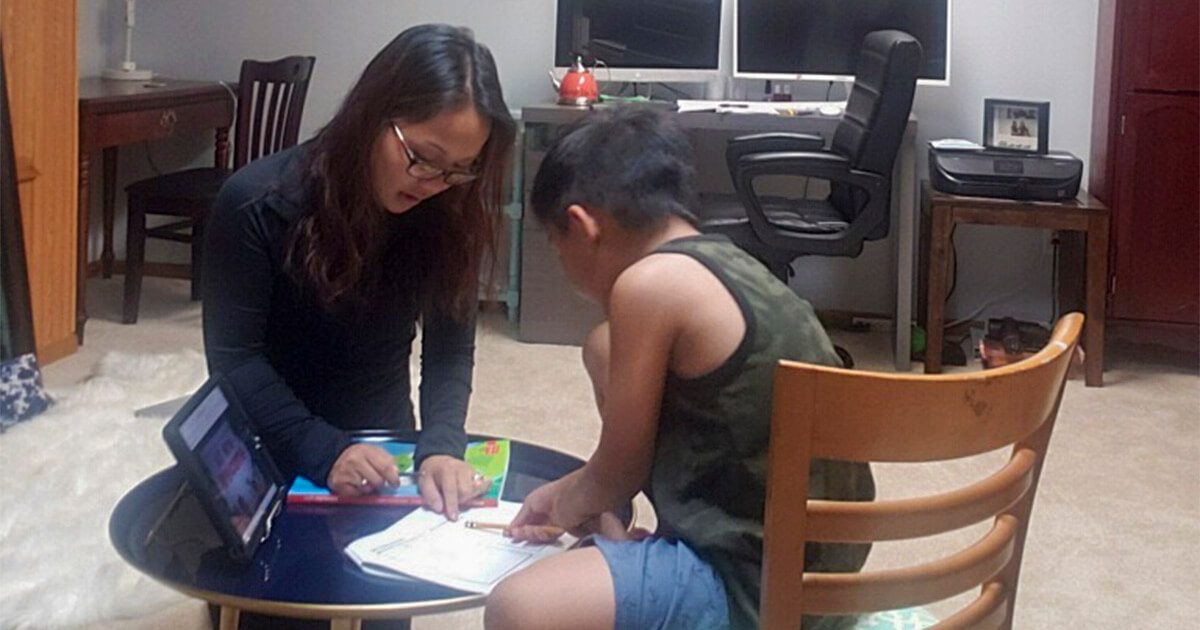
“Trying to do all of this at the same time, it gets overwhelming.”
Mai Xiong’s schedule is plenty busy, packed with meetings and duties related to her job operating the nonprofit she started. She also is an Eau Claire City Council member, assists members of the local Hmong community with a variety of issues, and is a wife and mother of three children.
These days Mai feels her time stretched even more thin. In addition to her already tight schedule, she is helping her kids, first-, fifth- and seventh-graders, learn at home after she and her husband Vee Moua chose that option this fall. Her children are among about 2,000 Eau Claire school district students learning online-only this semester. Others attend in-person classes twice a week and learn virtually two other days weekly.
Playing the roles of working mom, stay-at-home mom, and teacher simultaneously is a lot to handle, Mai said. Having virtual meetings for her job at the same time her children require her assistance with school work is difficult and at times is simply impossible, she said.
“Trying to do all of this at the same time, it gets overwhelming,” Mai said.
Mai’s two older children, 10-year-old Allison and 12-year-old Alexander, don’t require as much one-on-one attention while doing school work, and virtual learning is working relatively well for them, she said. But her son Landyn, 6, needs her help often. He works on his assignments seated next to his mom to ensure that he can receive help when needed, she said.
“I need him next to me so I can help him and make sure he understands his school work,” Mai said. “When (at-home learning) started, I didn’t realize I would need to be a full-time teacher with him.”
Despite challenges doing her job while helping her children learn, Mai said she is grateful she has the ability to work from home. Many people she knows must work outside of their homes, leaving their children to fend for themselves as they learn virtually.
“That situation is causing challenges for a lot of people, especially if they have young children,” she said.
To keep up with her job running Hmong American Leadership and Economic Development, Mai said she focuses on her children’s learning during the day and completes many work tasks at night. When she has to leave home for meetings during the day, she is fortunate that her mother can stay with the children, she said.
While online learning presents challenges, it has had upsides, Mai said. She and her husband have been surprised at the knowledge their children possess. Their family is also spending more time together than previously, she said.
“Sometimes it’s like ‘Wow, they know so much more than we thought they did,’ ” she said. “There are some really nice moments when you feel like you get to watch your kids learn in a way we didn’t experience before.”
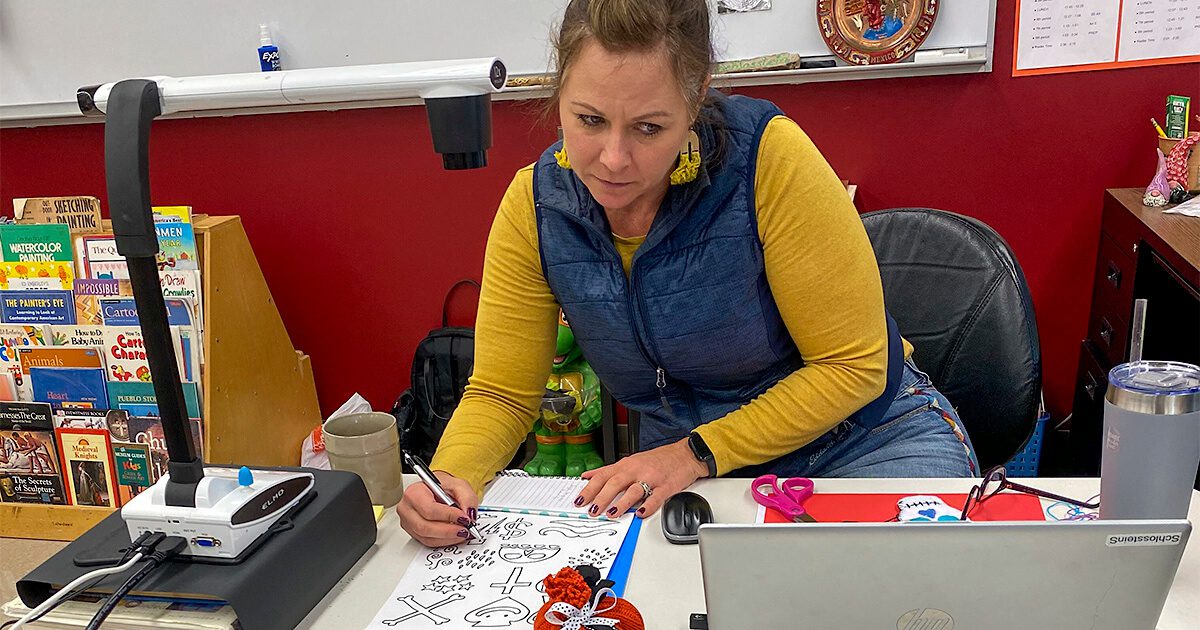
“I’m trying to teach kids in my classroom, and at the same time trying to work with those online. It is a real scramble.”
After a challenging spring switch to online-only learning when the coronavirus surfaced in Wisconsin and halted in-person instruction in the state’s schools, Susanna Schlosstein looked forward to a return to a more traditional education model as classes resumed in the Arcadia school district this fall.
After a spring and summer away from her classmates, Susanna and her husband, Najib Schlosstein, were eager for their 11-year-old daughter to return to her parochial school, where students are learning in person. Susanna, a middle school art teacher, was eager to teach her students face-to-face too.
She was hopeful measures intended to slow the spread of the coronavirus at school would work. However, when classes resumed, she quickly realized the fall semester would be challenging and exhausting.
In addition to instructing students in her classroom, Susanna was also simultaneously teaching others online, a process she said left her bouncing back and forth between the two student groups and hoping to provide them with enough instruction.
Engaging with students online was challenging, she said, especially in cases in which parents were working and not home to assist their children. The district provided computers and hotspots to students, but some still struggle to maintain connections because of weak broadband access.
“I’m trying to teach kids in my classroom, and at the same time trying to work with those online. It is a real scramble,” Susanna said. “Just simple things, like trying to get their cameras to work, it can be a struggle.”
In Arcadia and school districts across Wisconsin, the positive aspects of a return to face-to-face instruction are being balanced against the reality of having students and teachers close together, indoors, as a contagious, potentially deadly virus threatens their health and safety and that of the surrounding community.
Susanna knows firsthand the dangers the pandemic poses. She was forced to teach her students from home from Sept. 18 to Oct. 2 after she was exposed to COVID-19 because of outbreaks in the middle school. (She tested negative for the virus).
One week after she was sent home, her teaching colleagues were forced to teach virtually as well as the district switched to online-only learning for two weeks because of a surge of coronavirus cases in school. In-person learning resumed on Oct. 12.
“It was exhausting,” she said of the return to teaching both in-class and remote learners. “The remote learners aren’t always getting all of the attention they need.”
As COVID-19 cases continue to surge in Trempealeau County, where Arcadia is located, and the rest of Wisconsin, Susanna worries about getting sick and infecting family members. In addition to her husband and daughter at home, her mother is in a nursing home and is at risk for contracting the virus. Likewise, Najib’s parents are elderly, and after being exposed to the virus at school, she doesn’t feel comfortable interacting with and potentially infecting them.
“This virus really does force you to make some really hard decisions,” she said.
Despite those worries, Susanna said she backs in-person learning, in large part because she has seen students struggle with that education style. Some Arcadia students learning at home were not doing well academically and were asked to return to face-to-face instruction. As COVID-19 cases continue to climb, she expects more switches back and forth between in-person and virtual learning.
“I’m assuming we’re going to be in person for a while, then be teaching from home, then back to the classroom again,” she said. “That seems to be the way it’s going.”

“We’re all just doing the best we can, and trying to be flexible for whatever happens next.”
Whether teaching college students online or watching her 7-year-old son try to adapt to learning on a screen, Jill Stukenberg knows all too well the struggles of virtual education.
Instead of looking out over a classroom of students, Stukenberg, an associate professor of English at UW-Stevens Point at Wausau, does most of her teaching these days to a computer screen filled with empty boxes denoting students’ initials.
Most often she can’t see her students’ faces because they don’t activate their cameras, leaving her to guess whether they are listening in to her lessons. More students than normal aren’t attending class so far this semester, she said. Others report feeling depressed without learning with their peers.
“It’s the strangest feeling, to be talking to a screen full of empty faces,” Stukenberg said. “Students don’t like to turn their cameras on, so I can’t see them. I don’t really know if they’re paying attention or not.”
Stukenberg does most of her teaching this semester from home, although she meets with students for one in-person course. As she instructs her students, Stukenberg also helps her son Julian, a second-grader in the Wausau school district, with his online school work.
Julian frequently tires of staring at a screen all day as he learns, Stukenberg said, and sometimes requires help with the technology required of online education. She frequently bounces back and forth between instructing her students and assisting her son with his coursework, a job she shares with her husband when he isn’t working as a nurse at a nearby hospital.
“We’re only five weeks in, and we’re exhausted,” Stukenberg said during a recent interview. “I know there are single parents out there alone, and I have no idea how they’re doing it.”
To better meet Julian’s social needs, Stukenberg and her husband partnered with another couple with a child in school. Parents in both families are scrambling to make their job schedules work with their children’s educational needs.
“People are relying on grandparents, friends, and others to cobble things together” to help students with online learning, Stukenberg said.
The Wausau school district has been completely online so far this school year, but the school board recently approved students being allowed to return to in-person learning on Nov. 2 if parents choose that option. Stukenberg said she and her husband decided to have Julian keep learning at home as the coronavirus continues to surge across Wisconsin.
“I’m worried about the virus,” she said. “But I’m terrified by how much time my 7-year-old spends on a screen. “It’s too much. I worry about his development.”
While online learning at the college level is more practical than teaching elementary school students via computer, instrucing older students also presents challenges, Stukenberg said. In addition to not interacting face-to-face, technology glitches sometimes hinder instruction, she said, and some students don’t have access to quality internet connections.
She and other professors are recording video presentations and adapting their teaching as this semester progresses, Stukenberg said. Some of those instructional changes could make a college education more accessible to people in the future, she said, but redesigning lessons and making them tech-friendly is a lot of work and includes plenty of trial and error.
“I’m still adjusting my plans,” she said. “You try something and you realize ‘whoops, that didn’t work.’ Then you try something else. We’re all just doing the best we can, and trying to be flexible for whatever happens next.”
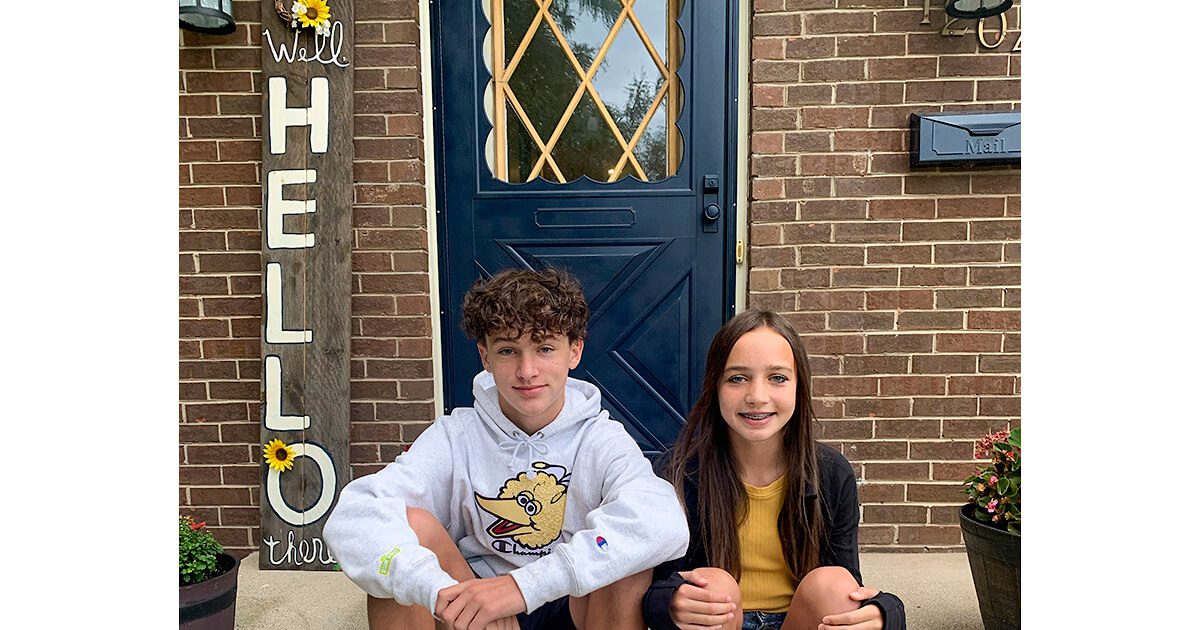
“Sometimes I feel like we are in a foreign country. It is just a weird situation.”
The first day of high school for Gavin Stueber and the start of Jorja Stueber’s eighth-grade year was Sept. 1. One month later, they no longer had the option to attend class in-person. The West DePere School District students had their classes switched to virtual learning.
On Monday, Gavin, 14, and Jorja, 13, were back in the classroom, their seesawing between in-person and virtual learning symbolic of what thousands of students are experiencing as coronavirus cases wax and wane in every corner of Wisconsin.
“It has been a bit of a roller coaster with school,” said their mom, Mary Stueber.
At the start of the school year, students in the Brown County school district had the option to attend school online or in person. The family discussed their options and decided Gavin and Jorja would physically go to school.
“It was easier for us because we don’t have anyone with a health condition or anyone that is immunocompromised,” Mary said.
Physically going to class meant wearing masks throughout the day, except for lunch and gym. The district encouraged teachers to take their classes outside, students no longer changed clothes for gym class, and no backpacks were allowed at the start of the school year—a rule that has since been relaxed.
At Jorja’s middle school, directional arrows are in place to guide hallway traffic and students have to eat lunch in their homerooms, spaced apart. West DePere High School limits the number of students per table in the cafeteria to five. There is no congregating in the halls.
“It’s so lame, mom. We get to class five minutes early,” said Mary, jokingly imitating her kids. “That is honestly the biggest complaint I hear.”
Students who are exposed to the coronavirus must quarantine at home for two weeks. Mary said it is still odd to hear her kids talking about how a student was walked out of class today and has to go “off site” for two weeks.
“Sometimes I feel like we are in a foreign country,” Mary said. “It is just a weird situation.”
The family knew there was a chance the district could switch to virtual learning based on the pandemic. When that happened, the family again adjusted. The hardest part was not knowing how long it would last.
The decision for classes to resume Monday came after a nearly three-hour-long West DePere City Council meeting Saturday night. Mary stayed up past midnight to watch the live-streamed meeting. Shortly after it ended, the district sent out a text message alerting parents that students again had the option to go to class.
“I look at school like a business, and the business of school has to figure out a way to coexist with COVID-19,” Mary said.
Politics

What’s the difference between Eric Hovde and Sen. Tammy Baldwin on the issues?
The Democratic incumbent will point to specific accomplishments while the Republican challenger will outline general concerns he would address....

Who Is Tammy Baldwin?
Getting to know the contenders for this November’s US Senate election. [Editor’s Note: Part of a series that profiles the candidates and issues in...
Local News

Stop and smell these native Wisconsin flowers this Earth Day
Spring has sprung — and here in Wisconsin, the signs are everywhere! From warmer weather and longer days to birds returning to your backyard trees....

Your guide to the 2024 Blue Ox Music Festival in Eau Claire
Eau Claire and art go hand in hand. The city is home to a multitude of sculptures, murals, and music events — including several annual showcases,...


